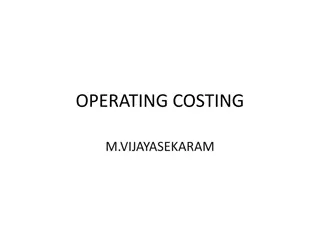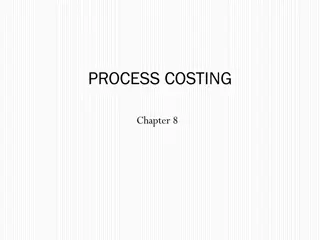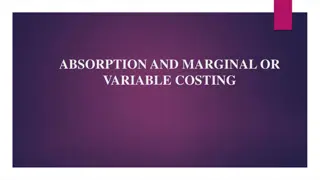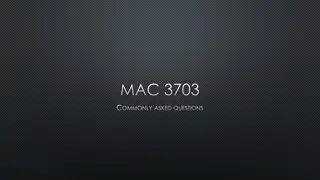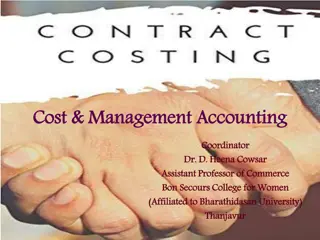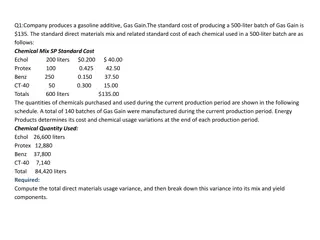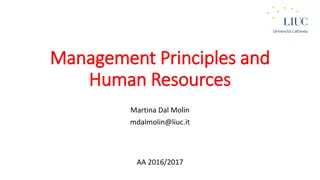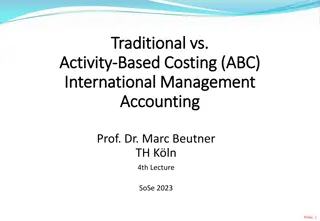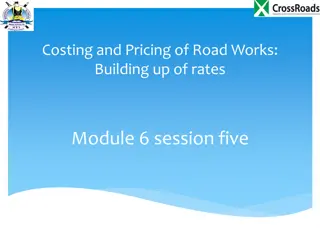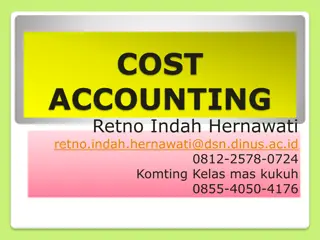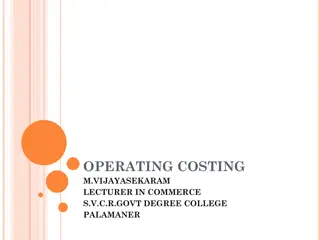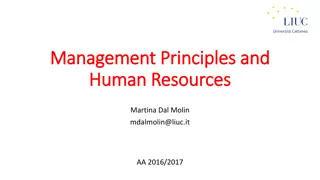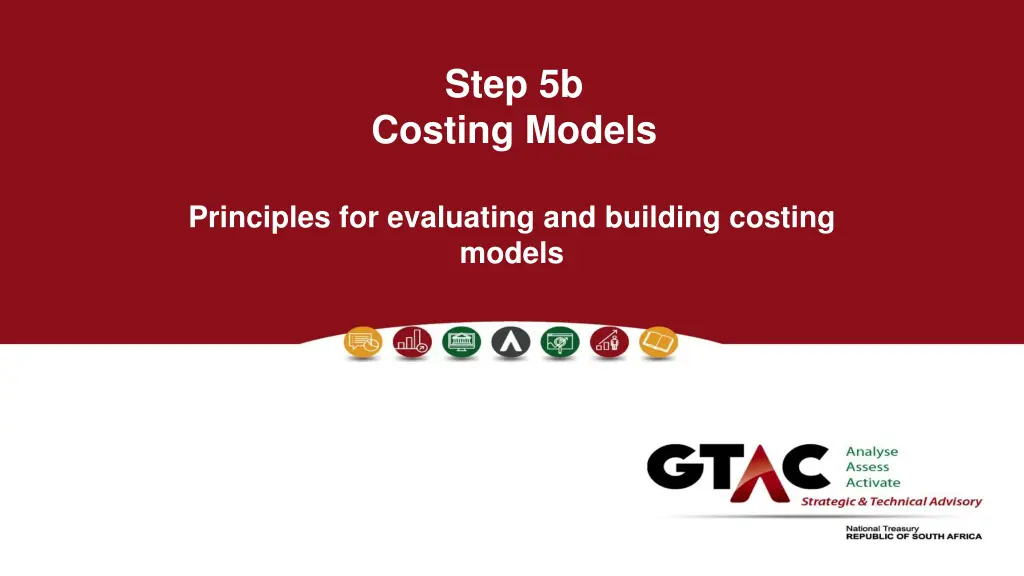
Costing Models: Principles for Evaluation & Building
Explore the art and science behind building effective costing models, incorporating principles like balancing details, transparency, simplicity, logical arrangement, and more. Dive into the complexities of modeling and understand the key elements necessary for a successful costing model.
Download Presentation

Please find below an Image/Link to download the presentation.
The content on the website is provided AS IS for your information and personal use only. It may not be sold, licensed, or shared on other websites without obtaining consent from the author. If you encounter any issues during the download, it is possible that the publisher has removed the file from their server.
You are allowed to download the files provided on this website for personal or commercial use, subject to the condition that they are used lawfully. All files are the property of their respective owners.
The content on the website is provided AS IS for your information and personal use only. It may not be sold, licensed, or shared on other websites without obtaining consent from the author.
E N D
Presentation Transcript
Step 5b Costing Models Principles for evaluating and building costing models
Spending Review Methodology What to expect, how will we work? Introduction & Savings Intro What is this implementation programme about? Institutional analysis Step 1 How does the programme work? Process maps and Logframes Step 2 How is it measured and how should it be measured? Indicators protocols Step 3 What are we spending on the programme? Expenditure Analysis Step 4 What does it actually cost to deliver the programme? Cost Modelling Step 5 What are our key messages? Where can we find savings? Report and Action Planning Step 6
Read the following The challenge in modelling lies in the structure of the spreadsheet and which functions should be used to create an efficient and sophisticated model that is easy to use and can accommodate a wide range of eventualities. Amateur modellers will want to solve the immediate problem. Their focus is on the problem and their challenge is how best to solve it and very often the spreadsheet becomes an impediment. An experienced modeller is likely to approach the problem from a spread- sheeting perspective. The spreadsheet becomes a tool for representing and exploring reality, thus gaining exciting insights into the nature of the problem. Adapted from: Grossman , T (2002). Spreadsheet Engineering: A Research Framework 3
PRINCIPLES FOR EVALUATING AND BUILDING COSTING MODELS 4
1. Discuss what is meant by the following statements Building a good costing model is Building a good costing model is a blend of both art and science a blend of both art and science Jonathan Carter, 2015 Senior Economist with Cornerstone Economic Research Exercise 5.4: What is a good costing model? No costing model is No costing model is right but a costing model can be but a costing model can be wrong Conrad Barberton, 2016 Senior Economist with Cornerstone Economic Research right in the objective sense, in the objective sense, wrong 2. You are asked to evaluate the PER INSET costing model: List the things you like about the model. List the weaknesses/shortcomings you can see with the model. 5
Balancing the art and science of costing 80/20 principle too much detail is a bad thing! Transparency show all assumptions and calculations Formatting principle keep it simple and be consistent Ordering principle arrange the worksheets logically Colouring-in principle use colours to identify cells KISS principle keep it (all parts of the model) simple Principles for building costing models Apply these principles from the very beginning it saves a lot of time! 6
Balancing Art and Science KISS principle 80/20 principle building a good Costing Model Colouring-in principle Transparency principle Ordering principle Formatting principle Apply these principles from the very beginning it saves a lot of time! 7
Balancing the art and science of costing Always keep in mind that Building a good costing model is Building a good costing model is a blend of both art and science a blend of both art and science One is objective and the other subjective The science dimension involves data, formulas and math The calculations are either right or wrong The art dimension involves imagination, assumptions and judgement Does the design of the model adequately reflect reality? Are the key assumptions reasonable, realistic and informed? Getting the balance right requires judgement - strengthened by experience 8
80/20 principle Too much detail is a bad thing! focus on the 20% of cost components which account for 80% of the costs focus on getting 80% of the costs by doing 20% of the costing work How does one avoid too much detail? Focus on identifying the key cost drivers - the main programme elements and activities the key groups of clients or beneficiaries of the service the main inputs, activities and outputs of the service Avoid trying to work out How long is a piece of string? simply make an informed assumption or identify a plausible range 9
Transparency Show all assumptions and calculations avoid using hidden sheets, hidden cells or hidden formulae Avoid building assumptions into the formulae Wrong if: Administrators (level 8) : 26 = (D82*9)+D83 Right if: 26 =IF($C$1=$U$14,(D82*9)+D83,D82+D83) Can you explain the difference? Use the notes function to provide explanations 10
Formatting principle Keep formatting simple and be consistent structure similar sheets the same way data sheets, working sheets, results sheets avoid blank columns or rows when working with series data makes it more difficult to drag or copy & paste formulae summary data should be structured in exactly the same way on each sheet - identical cell references this facilitates the consolidation / adding-up of information Provincial Management Total Provincial Management Cost of employment Operational costs Payments for capital assets Total ProvincesPragmatic Scenario 2014/15 R 160 331 064 R 1 407 090 373 R 8 016 553 R 1 575 437 991 Total operating costs 11 Total infrastructure costs (once-off) R 702 000 000
Ordering principle Arrange the worksheets logically contents and descriptions, result sheets, working sheets, data colour the sheet Tabs to distinguish different kinds of sheets Costing Model Setup and Analysis Sheets Output Sheets Main Costing Sheets Working Information Sheets MSetup Startup USDSum_ExR PDiagram Management USDSum_PPP PElements Training Sum DeliveryV GroupV Amortization HomeV ExRates CTransfers PPP Template1 Inflation Template2 Definitions Template3 Lists Buildings 12
Colouring-in principle Use colours to identify different types of cells information cells descriptions of inputs or assumptions number input cells where number assumptions are inputted formula cells where the results of formulae are shown clear / white light blue light yellow Changing assumptions As a general rule: if a number is in a blue cell then it is a variable that can be changed by the user. These cells contain conditional formatting that results in them being highlighted green if the user changes the variable. This is to allow for easy tracking of scenario changes. If a number is in a yellow cell then it is a calculated amount based on the assumptions in the blue cells. The yellow cells must not be 'over-typed' as they contain formulae (this will not be possible so long as the locked status of the spread sheets it maintained). 13
KISS principle Keep it (all parts of the model) simple Show calculations in steps rather than using long formula Use sheets to separate different types of data/information Use the Group function to make it easier to navigate 14
With reference to the Khanyile Costing: Exercise 5.5: Applying the core principles 1. Open the Khanyile Costing Example 1: a. Can you explain the key question this costing model is trying to answer? b. Identify and discuss areas where the core principles have not been followed in this model c. What would you do to improve the model? 2. Open the Khanyile Costing Example 2: a. Why is this model more useful? 15
Questions or comments? 16



